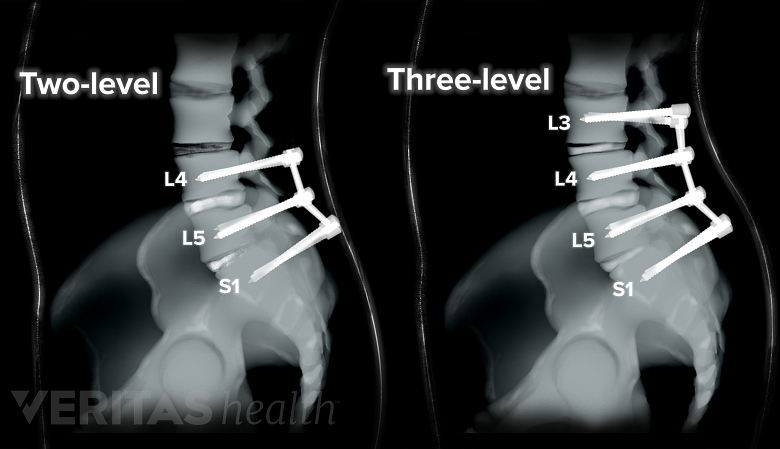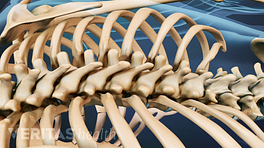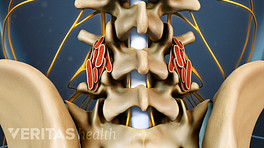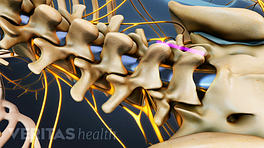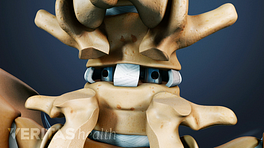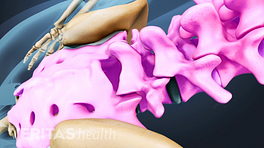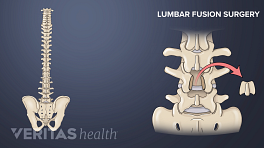A posterior lumbar interbody fusion (PLIF) surgery has the primary advantage of providing an anterior fusion of the disc space without having a second incision (as would be necessary with an anterior/posterior spine fusion surgery).
The technique may also offer conservative and restorative benefits, such as 1 Mobbs RJ, Phan K, Malham G, Seex K, Rao PJ. Lumbar interbody fusion: techniques, indications and comparison of interbody fusion options including PLIF, TLIF, MI-TLIF, OLIF/ATP, LLIF and ALIF. J Spine Surg. 2015;1(1):2-18. doi:10.3978/j.issn.2414-469X.2015.10.05 :
- Direct decompression and visualization of nerve roots
- Adequate interbody height restoration
- Intact posterior support structures during decompression
In general, the PLIF technique may provide complete, all-around spinal fusion from a single incision.
The typical disadvantages of a PLIF surgery include but are not limited to the following:
- A limited amount of the disc space can be removed, leaving less surface area available for a fusion than in the anterior approach.
- A larger spinal implant can be inserted from an anterior approach, which provides for superior stabilization.
- Preparation of the endplates before inserting the bone graft may be more complicated than in an anterior approach.
- There is a small but finite risk that inserting a cage posteriorly will allow it to retro pulse back into the spinal canal and create neural compression.
- Prolonged muscle retraction may lead to delayed recovery.
PLIF surgery has a higher potential for solid fusion rates than posterolateral fusion rates because the bone is inserted into the anterior portion (front) of the spine. Bone in the anterior portion fuses better because there is more surface area than in the posterolateral gutter, and also because the bone is under compression. Bone in compression heals better because bone responds to stress (Wolff's law), whereas bone under tension (posterolateral fusions) does not see as much stress.
In This Article:
- Posterior Lumbar Interbody Fusion (PLIF) Surgery
- PLIF Potential Advantages and Disadvantages
- Posterior Lumbar Interbody Fusion (PLIF) Video
PLIF Potential Risks and Complications
Multilevel PLIF surgeries carry a higher risk of fusion failure.
The principal risk of a PLIF is that a solid fusion will not be obtained (nonunion), and a second surgery to re-fuse the spine may be necessary. Fusion rates for a PLIF are typically as high as 90% to 95%. This approach is one of the spinal fusion surgeries with lower risks of nonunion. 1 Mobbs RJ, Phan K, Malham G, Seex K, Rao PJ. Lumbar interbody fusion: techniques, indications and comparison of interbody fusion options including PLIF, TLIF, MI-TLIF, OLIF/ATP, LLIF and ALIF. J Spine Surg. 2015;1(1):2-18. doi:10.3978/j.issn.2414-469X.2015.10.05
Nonunion rates are higher for patients who smoke and/or are obese, patients who have had multiple-level fusion surgeries, and who have been treated with radiation for cancer. Not all patients who have a nonunion will need to have another spine fusion procedure. As long as the joint is stable and the patient's symptoms are better, more back surgery is not necessary.
Other than nonunion, the risks of a spinal fusion surgery include:
- Degeneration in the adjacent spinal segment
- Epidural fibrosis (the scarring of tissue near a nerve root)
- Nerve root injury, including dural tear and spinal fluid leak
- Infection
- Bleeding
While adjacent segment degeneration tends to be more prevalent in PLIF patients than in ALIF patients, 2 Min JH, Jang JS, Lee SH. Comparison of anterior- and posterior-approach instrumented lumbar interbody fusion for spondylolisthesis. J Neurosurg Spine. 2007;7(1):21-26. doi:10.3171/SPI-07/07/021 the surgical approach with the highest rate of successful fusion, as well as the lowest rate of complications, is PLIF. 3 Souslian FG, Patel PD. Review and analysis of modern lumbar spinal fusion techniques [published online ahead of print, 2021 Jul 15]. Br J Neurosurg. 2021;1-7. doi:10.1080/02688697.2021.1881041 , 4 Qureshi R, Puvanesarajah V, Jain A, Shimer AL, Shen FH, Hassanzadeh H. A Comparison of Anterior and Posterior Lumbar Interbody Fusions: Complications, Readmissions, Discharge Dispositions, and Costs. Spine (Phila Pa 1976). 2017;42(24):1865-1870. doi:10.1097/BRS.0000000000002248
These complications are fairly uncommon and vary depending on the technique and materials used. For example, the risk of infection during PLIF increases if one cage is used instead of two. 5 Ahn DK, Park HS, Choi DJ, et al. The difference of surgical site infection according to the methods of lumbar fusion surgery. J Spinal Disord Tech. 2012;25(8):E230-E234. doi:10.1097/BSD.0b013e31825c6f7b In addition, there is a risk of lower back pain that does not subside, despite achieving a successful spine fusion.
Read more about Spine Fusion Risks and Complications
- 1 Mobbs RJ, Phan K, Malham G, Seex K, Rao PJ. Lumbar interbody fusion: techniques, indications and comparison of interbody fusion options including PLIF, TLIF, MI-TLIF, OLIF/ATP, LLIF and ALIF. J Spine Surg. 2015;1(1):2-18. doi:10.3978/j.issn.2414-469X.2015.10.05
- 2 Min JH, Jang JS, Lee SH. Comparison of anterior- and posterior-approach instrumented lumbar interbody fusion for spondylolisthesis. J Neurosurg Spine. 2007;7(1):21-26. doi:10.3171/SPI-07/07/021
- 3 Souslian FG, Patel PD. Review and analysis of modern lumbar spinal fusion techniques [published online ahead of print, 2021 Jul 15]. Br J Neurosurg. 2021;1-7. doi:10.1080/02688697.2021.1881041
- 4 Qureshi R, Puvanesarajah V, Jain A, Shimer AL, Shen FH, Hassanzadeh H. A Comparison of Anterior and Posterior Lumbar Interbody Fusions: Complications, Readmissions, Discharge Dispositions, and Costs. Spine (Phila Pa 1976). 2017;42(24):1865-1870. doi:10.1097/BRS.0000000000002248
- 5 Ahn DK, Park HS, Choi DJ, et al. The difference of surgical site infection according to the methods of lumbar fusion surgery. J Spinal Disord Tech. 2012;25(8):E230-E234. doi:10.1097/BSD.0b013e31825c6f7b

